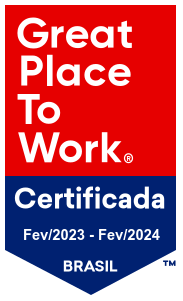As a CHRO (Chief Human Resources Officer) in a SaaS (Software-as-a-Service) company, self-improvement is crucial to enhance your craft, emotional intelligence, and business skills. Here are some valuable leadership insights to help you in each of these areas:
Perfect your Craft
There are hundreds of HR and PeopleOps professionals out there, but none like you. Here’s how to keep being awesome!
- Stay Updated: Continuously invest in your professional development by staying updated on the latest trends, research, and best practices in HR and SaaS industries. Attend conferences, workshops, and webinars, and read relevant books and articles.
- Network: Build a strong professional network both within and outside your industry. Connect with other CHROs, attend industry events, and join HR communities to exchange ideas and learn from others’ experiences.
- Learn from Peers: Seek opportunities to learn from other CHROs or HR leaders in SaaS companies. Engage in peer-to-peer mentoring or join professional associations to access valuable insights and guidance.
HR leaders must adapt to the changing business landscape by acquiring new skills, embracing digital transformation (especially in a SaaS environment), and connecting with industry experts. Agility, strategic thinking, understanding workforce needs, and effective communication are key for CHROs to thrive.
Use your Emotional Intelligence to your Advantage
Software companies consist of highly skilled and intelligent engineers who excel in their technical expertise. Soft skills, however, may not always be their strongest suit. If this is where you shine, you can play a key role in helping the team develop and enhance abilities such as:
- Self-Awareness: Develop self-awareness to understand your strengths, weaknesses, emotions, and triggers. Regularly reflect on your actions, behaviors, and their impact on others. Consider taking personality assessments or working with a coach to gain deeper insights into your emotional intelligence.
- Empathy: Cultivate empathy to understand and appreciate the perspectives and emotions of your team members and stakeholders. Practice active listening, show genuine interest, and be open-minded. This will help you build stronger relationships and make more informed decisions.
- Conflict Resolution: Develop effective conflict resolution skills to handle disagreements and difficult conversations with empathy and fairness. Focus on finding win-win solutions, encourage open dialogue, and facilitate constructive discussions to resolve conflicts.
Leadership Insights: Show off your Business Knowledge
Although 70% of software companies’ budgets usually go to payroll, PeopleOps’ impact on the company’s overall success is often underestimated. Make sure you and your team are truly valued by developing (and presenting) characteristics such as:
- Strategic Thinking: Enhance your strategic thinking abilities to align HR initiatives with overall business goals. Understand the company’s vision, mission, and long-term objectives. Collaborate with other leaders to create HR strategies that support the organization’s growth and success.
- Financial Acumen: Gain a solid understanding of financial concepts and metrics related to your company and industry. Learn how HR initiatives impact the organization’s bottom line, and be able to articulate the value of HR investments and programs in financial terms.
- Influence and Communication: Sharpen your communication and influencing skills to effectively convey your ideas, gain buy-in from stakeholders, and drive change. Develop the ability to adapt your communication style to different audiences and present complex HR concepts in a clear and compelling manner.
Remember, self-improvement is an ongoing journey. Dedicate time and effort to continuous learning, seek feedback, and embrace opportunities to grow personally and professionally.
According to Lucas Carvalho, our Head of Relationship Success, PeopleOps is crucial to a company’s success as it attracts and retains top talent, boosting the organization’s competitive advantage. By creating a positive work environment and fostering employee engagement, PeopleOps enhances productivity and drives business growth. It also invests in learning and development, empowering employees to enhance their skills and stay ahead in a rapidly changing business landscape:
“By aligning HR initiatives with overall business goals, PeopleOps ensures that the organization’s human capital strategy supports and contributes to its long-term success and sustainability.”
How can the CHRO support CTOs and CPOs to grow successful teams that deliver on product vision?
To support CTOs (Chief Technology Officers) and CPOs (Chief Product Officers) in growing successful teams that deliver on the product vision, CHROs can take the following steps:
- Collaborate on Talent Acquisition: Work closely with CTOs and CPOs to understand the skills and competencies required for their teams. Partner with the recruitment team to attract and hire top talent with the right technical and product expertise. Ensure alignment between the hiring process and the specific needs of the technology and product functions.
- Foster a Culture of Collaboration: Encourage a culture of collaboration and cross-functional teamwork within the organization. Break down silos between HR, technology, and product teams by promoting regular communication, knowledge sharing, and joint problem-solving. This will create an environment where teams can work together seamlessly to deliver on the product vision.
- Develop Technical and Product Skills: Provide opportunities for continuous learning and development of technical and product skills. Support CTOs and CPOs in identifying relevant training programs, certifications, or workshops for their teams. Invest in upskilling and reskilling initiatives to ensure employees have the necessary expertise to excel in their roles.
- Establish Career Development Paths: Collaborate with CTOs and CPOs to create clear career development paths for their teams. Define growth opportunities, job rotations, and promotion criteria within the technology and product functions. Support the implementation of mentorship, executive coaching programs, or even individual therapy sessions with accredited professionals (if the employees are comfortable with this) to facilitate both the professional and personal growth of team members.
- Performance Management and Feedback: Work with CTOs and CPOs to establish effective performance management processes that align with the goals of technology and product functions. Implement regular performance feedback mechanisms, such as 360-degree feedback or continuous feedback practices. Ensure that feedback and recognition are provided in a timely manner to motivate and engage team members.
- Employee Engagement and Retention: Collaborate with CTOs and CPOs to create strategies that enhance employee engagement and retention within their teams. Conduct regular pulse surveys to gather feedback and address any concerns. Foster a positive work environment that values diversity, inclusion, and work-life balance.
- Succession Planning: Develop succession plans in collaboration with CTOs and CPOs to identify and groom future leaders within the technology and product functions. Implement leadership development programs and provide opportunities for high-potential employees to take on new challenges and responsibilities.
- Metrics and Analytics: Leverage HR metrics and analytics to measure the effectiveness of talent management initiatives within technology and product teams. Analyze data on employee performance, engagement, and retention to identify areas for improvement and make data-driven decisions.
By actively partnering with CTOs and CPOs, the CHRO can provide the necessary support and guidance to build and nurture high-performing teams that contribute to the successful delivery of the product vision.
The CHRO can help CTOs and CPOs become more competitive by diversifying their teams. Individuals from different backgrounds and experiences bring fresh ideas and perspectives, fostering innovation and creativity.
Inclusive hiring practices empower CTOs and CPOs to tap into the collective potential of a diverse workforce. This approach builds up team dynamics, helping them overcome challenges, and leading to the successful delivery of the product vision with greater market adaptability.
Why should I convince my CEO, CTO, and CPO that expanding our team to Latin America can help us in reaching the company’s strategic goals?
To help you make a compelling case, here are several advantages of expanding to LatAm:
- Access to a diverse and skilled talent pool
- Cost-effectiveness through lower labor and operating costs
- Time zone advantages for improved collaboration and productivity
- Bilingual professionals with strong English proficiency
- Cultural proximity facilitates alignment and teamwork
- Market expansion opportunities in Latin America
- Increased innovation and creativity through diverse perspectives
- Scalability and flexibility supported by a favorable business environment
- Competitive advantage in a global marketplace
Now, to convince your CEO, CTO, and CPO that expanding your team to Latin America is a good idea to reach your SaaS company’s strategic goals, you can follow these steps:
- Understand the Strategic Goals: Gain a deep understanding of the company’s strategic goals and how expanding into Latin America can contribute to achieving those goals. Identify specific benefits and opportunities that this expansion can bring, such as accessing new markets, diversifying the talent pool, or reducing costs.
- Research the Latin American Market: Highlight any market trends or emerging opportunities that make Latin America an attractive region for expansion. Signal the availability of a skilled talent pool in Latin America and its relevance to your company’s needs. Showcase the quality of education, technical expertise, and language skills in the region. Emphasize how tapping into this talent pool can bring diversity, innovation, and new perspectives to the company.
- Outline Business Benefits: Prepare a comprehensive business case that outlines the specific benefits of expanding into Latin America. Showcase how this expansion can help increase market share, drive revenue growth, enhance customer support, or improve product development capabilities. Quantify potential cost savings or revenue generation opportunities. Illustrate how expanding into Latin America can provide your company with a competitive advantage over competitors. Explain how being present in the region can help you better understand local customer needs, adapt your product offerings, and deliver localized customer support. Demonstrate how this can result in higher customer satisfaction and retention rates.
- Mitigate Risks: Acknowledge potential risks and challenges associated with expanding into a new region. Develop a plan to mitigate these risks, such as conducting thorough market research, establishing strong local partnerships, complying with local regulations, and addressing any language or cultural barriers. Present a risk mitigation strategy that shows you have thoroughly considered and planned for potential challenges.
- Financial Analysis: Provide a financial analysis that demonstrates the potential return on investment (ROI) of expanding into Latin America. Include projections of revenue growth, cost savings, and market penetration. Show a clear path to profitability and outline a realistic timeline for achieving the desired outcomes.
- Present a Roadmap: Outline a clear roadmap for the expansion into Latin America. Break it down into phases, highlighting key milestones, resource requirements, and estimated timelines. Show that you have a well-thought-out plan and that you can execute the expansion effectively.
- Address Questions and Concerns: Anticipate questions, concerns, or objections from your CEO, CTO, and CPO, and be prepared to address them. Anticipate potential challenges they may raise and provide compelling counterarguments and evidence to support your proposal.

Although expanding into Latin America may sound like a complex process, it doesn’t need to be. As experts in international expansion, we can guide your company through each step of the journey, ensuring a smooth and successful transition. Schedule a commitment-free call with our team to explore how Ubiminds can help you tap into the potential of the Latin American market.
At the end of the day, you have to build a Coalition of Support. Engage other key stakeholders who may support your proposal, such as the CFO or the Head of Sales. Seek their input and endorsement to strengthen your case. Their support can help influence the decision-makers and build a consensus around the expansion plan.
Don’t be just another task-oriented HR professional; instead, be someone who cares about understanding before addressing the requests, always suggesting support and ideas for solving problems that have come your way. Help other departments build self-awareness about their needs and potential solutions.
Remember to tailor your approach to the specific interests and priorities of your CEO, CTO, and CPO. Customize your arguments to align with their strategic objectives and demonstrate how expanding into Latin America is a viable and beneficial strategy to reach the company’s goals.


